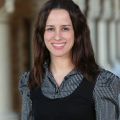This article assesses the changes in mathematics and reading scores of socially advantaged or disadvantaged Brazilian students, in the International Student Assessment Program – Pisa – between 2000 and 2012, and the National Basic Education Assessment System – Saeb – between 1995 to 2013, in order to extract some provisional conclusions regarding the variations in the effectiveness of basic education in Brazil (1st to 8th/9thgrades). Our findings show that the gains in the Pisa math test are much larger than in the reading test. The gains (or their absence), in the Saeb test, for the 1999-2013 period, are also higher in mathematics than in Portuguese. Part of the gains in the Pisa math test and most of those in the reading test result from the gradual increase in the number of years fifteen year-old students spend in school. The gains in the Pisa test for more advantaged Brazilian students are lower than for those coming from families with lower educational resources; this also applies for the Saeb test
Carnoy, M.,Khavenson, T., Fonseca, I., Costa, L., Marotta, L. (2013). Is Brazilian Education Improving: A Comparative Foray Using PISA and SAEB Results. Cadernos de Pesquisa,45(157).





